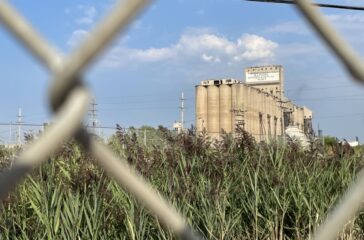Chicago’s southeast side pushes back against pollution
By Paul Gordon
For more than 100 years, the Southeast side of Chicago has been a magnet for industry – a place where working class families made their homes and raised their children alongside steel mills, grain elevators, cement kilns and other operations drawn to the easy transportation of goods afforded by rail lines and the proximity of the Calumet River.
There once was a common saying in the area: “If there is soot on the windows, there is food on the table.”
The price for the industrial prosperity has been high: Now the area is home to two Superfund sites, multiple landfills, and numerous abandoned tracts of heavily polluted land that lie adjacent to a new cast of polluters – factories constantly busy milling, grinding and combusting.
Once a marshy area, 40% of Chicago’s wetlands have disappeared since 1900. The wetlands, which filter pollutants and prevent flooding, began to drain when the city altered the course of the Chicago River, sending its industrial waste-fouled waters away from population centers.
Without the wetlands, residents of Chicago’s southeast side experience high rates of flood damages, poor air quality, heat vulnerability, and other harmful environmental impacts, leaving people struggling for ways to protect their health and the environment.
“All of the environmental issues facing Chicago are magnified on the Southeast side where industrialization and contamination have created an inhospitable and dangerous environment for many,” said Daniel Suarez, conservation manager for Audubon Great Lakes, a regional arm of the national nonprofit conservation group.
 EWG
EWG